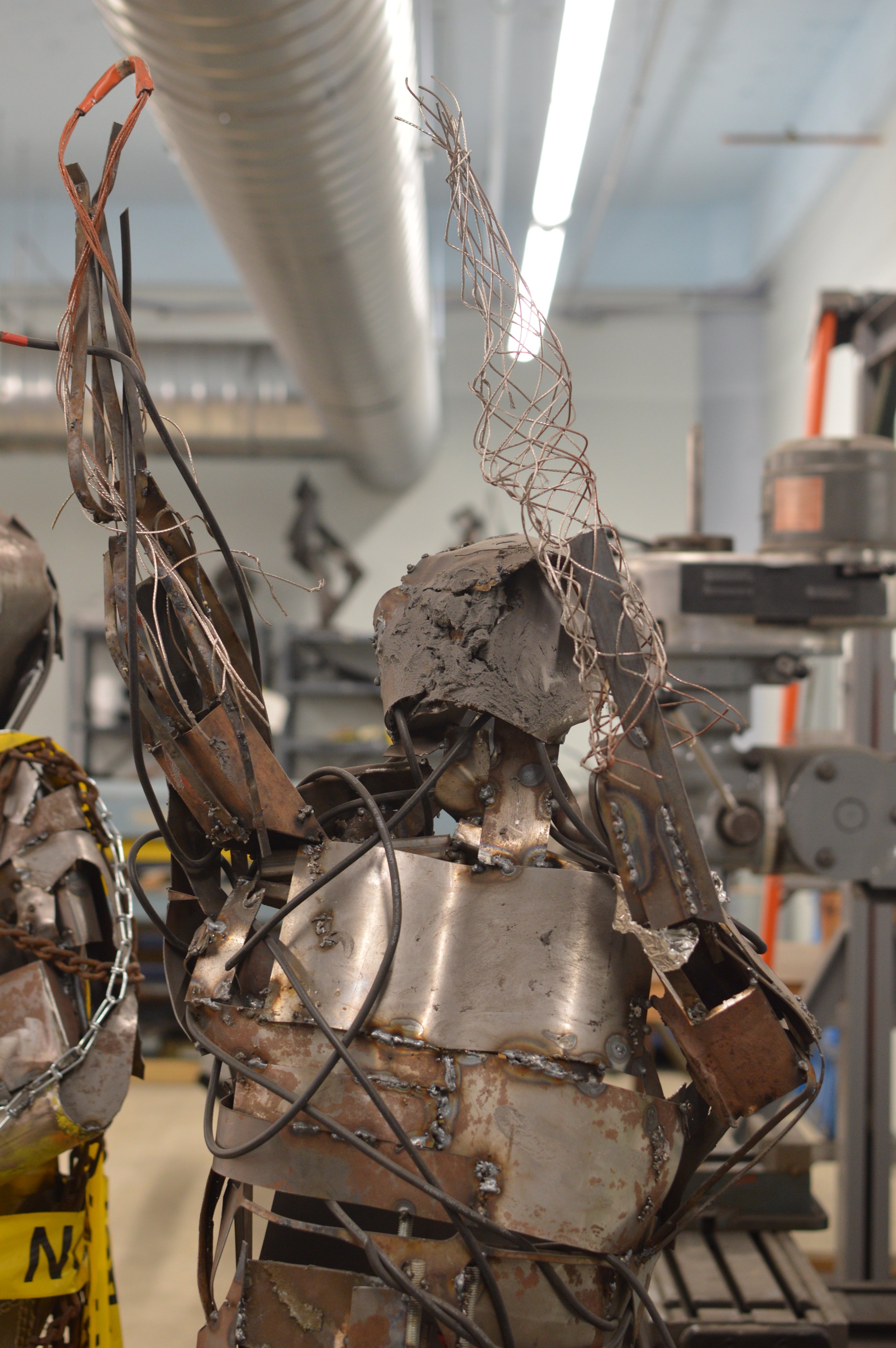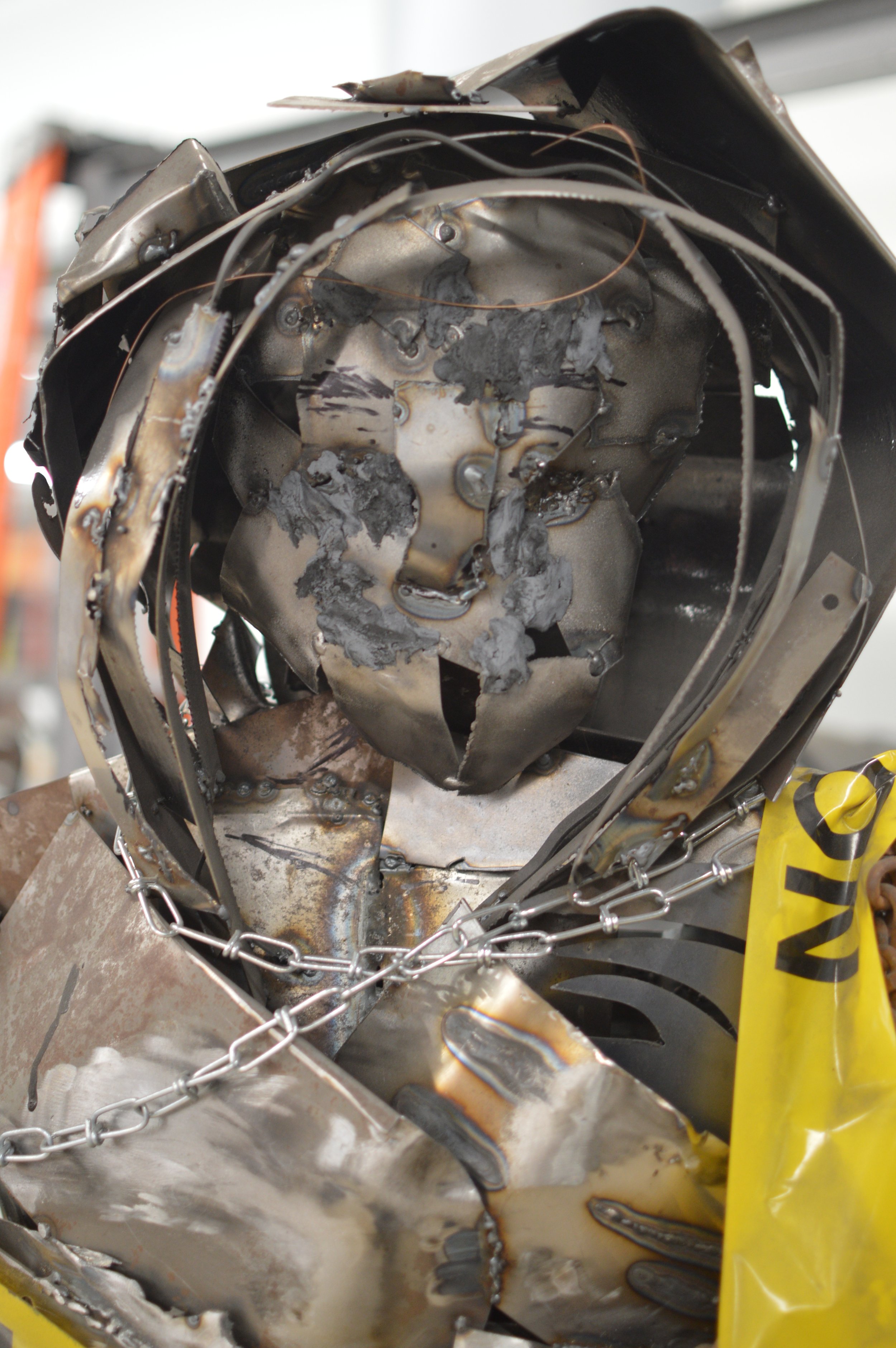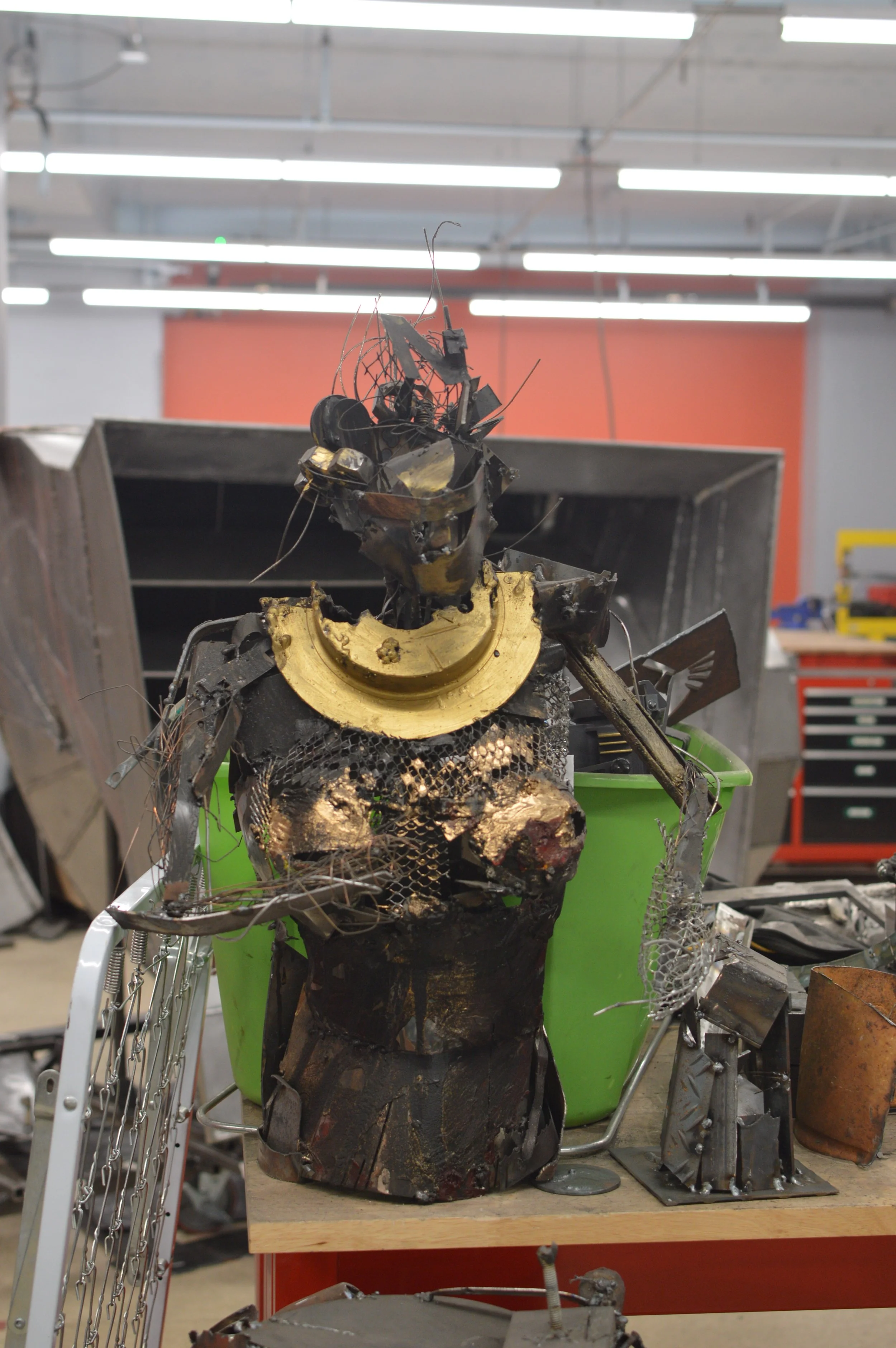Innerview: TraÉ brooks
A COLORFUL CONNECTION TO THE CANVAS OF CREATION. TRULY PAINTING A PICTURE ALL HIS OWN. FROM SKIN TO SOUL HE SHOWS THAT ART IS ALWAYS OWNED BY THE ARTIST FIRST. A MAN MARCHING WITH THE MENTALITY OF RUNNING TO HIS OWN RHYTHM. MAKING METAL INTO BONE. PRESENTING THE ARTIST KNOWN AFFECTIONALLY AS -
TRAÉ BROOKS.
Photo: Jordan Alexandre
Hello,
My name is Jordan D. Alexandre with Cafeteria media. Presenting to you -
InnerView
A series where we take an introspective look at artists and their craft without prompting any questions. Only through our observations and what they choose to disclose can we get a better view inside the artist world. Today we have:
Traé Brooks,
A Connecticut native with a strong connection to his art, his path, and his self-work. I first met Trae in art college and after countless conversations and critiques; growing, suffering, and succeeding in both lives and selves; we became friends and now share a studio space in downtown Hartford. During our time there I have been keeping close tabs on his latest undertaking.
Metal Sculptures.
Photo: Jordan Alexandre
Photo: Jordan Alexandre
I am always taken aback anytime a new one is transmuted into this timeline. These full scale human like figures are unbelievable to witness in waking life. Breathtaking works that bend the mind and metal, figures that seem familiar and futuristic. These pieces are abstract and very gestural, yet complete in concept even if not true to the form that they could be suggesting. It’s almost as if the works have achieved the Goldilocks zone when it comes to the addition and subtraction of material and mass.
Photo: Jordan Alexandre
Photo: Jordan Alexandre
The contrast between metal meat and hollow holes, coming together in this massive balancing act that allows not even a hair of this scrap heap turned sculptural hero’s journey to hit the floor. Well placed welds and careful cuts allow these works to wake and walk all by the hands of the artist that could give Dr. Frankenstein a run for his monster-making money.
There’s something about the way this man bends metal. It’s graceful and guided while being chaotic and almost careless. I once again run into the phenomenon where it’s almost as if by magic that these momentous monuments get made. You can see the care. The message. The personal progress. Trials and tribulations. Tests and missteps to all get to the end form that is truly unbelievable.
Unpolished but not unfinished.
Photo: Jordan Alexandre
Photo: Jordan Alexandre
Some may mention the rust, the sharp and rough edges as unprofessional, unclean and unkempt. But I would say that this viewpoint is not seeing past the sculptures Lazarus pit also known as the scrap heap. These may be seen as limitations or chains that bind the work, but I believe it actually frees it and allows the option for evolution in a “polished” direction if the artist so chooses.
But I am of the tribe that doesn’t want perfect pieces cut and welded to make well-manicured, almost manufactured “masterpieces”.
I feel that the nature of the works as they truly stand out now speaks to the nature of the world and more importantly the figures that they represent: ourselves. How we are expected to be these bright shiny perfect beings? Perfectly polished corners and curves. Pleasing to everyone from every angle. An Angel whose wings are bound and is hanging up only for a disingenuous display.
Traé, in my mind, chooses to keep the rough edges and outlines.
The marks and mistakes.
The scars of hard work.
The scars of time and trials.
The scars of himself.
And most importantly,
the scars of self-work.
Then put them forward first to display, almost to say that we are not perfect which is God’s honest truth. Preaching that our rust and rivets don’t have to be polished to make us beautiful, but that the true battle is with society’s standards of both success and self. To me, Traé is saying that we are constructed as we should be and the wear and tear that some would call weakness, the tears and trauma that cause us to rust,
Is in fact, what makes up the most important parts of what makes us, us.
Photo: Jordan Alexandre
During the course of my time, a conversation came up. Traé and I brought up some very good points on a topic that many artists love to discuss and debate:
“Does all great art come from a place of suffering? Can great art be made without great suffering?”
A segment from the conversation (edited to make more sense) went as follows:
Jordan:
”Do you feel that the only necessary means for us to suffer is for us to seek joy? And the only reason we feel such intense joy is because of the great suffering we have endured?”
Traé:
“If you're in a limbo state you never have a point of reference. For both suffering and joy. but it is a matter of taking both into perspective. But specifically when it comes to art and art making. There has to be a level of suffering that is involved. But you get the same thing on the flip side of creating just because of The elation of creation. ”
Jordan:
“Let’s say there’s a grand creator that created us and everything. Now being beings that came from that source. Almost like the DNA and attributes that get passed down from parent to child, we would have a natural attribute to do the same. But as artists that need is even stronger. The mentality is that I don’t get to create but I have to create. That, it’s a need and a non-option.”
Traé:
“It’s not a luxury it’s a need, But I also think the act of creation. Even without the art-making aspect. The act of it is a need because as human beings we need to procreate in order to survive and pass on our genes. But I would argue that creation is a need, no matter the form it takes.”
Jordan:
“From bird nests to their eventual inhabitants we all have to create to continue to progress and to survive. “
Traé:
“To parlay that even further there’s even suffering in creation. Childbirth is painful but it follows with the joy of having a created child. So I do think that there is a dance between creation and suffering. And I think it’s not as simple as a binary of good and bad. Same as how Death is a part of Life not the end of it. Suffering is a part of creation not the destruction of it.
Suffering is not the end of joy.”
Jordan:
“So suffering is merely the doorway to joy and joy is merely the doorway to suffering.?
Traé:
“Exactly, there’s even this crown where it’s nothing but joy. Even the concept is centered around joy. When a lot of the art I make somewhat comes from a place of suffering. Especially the fit and finish of the work. But I don’t want to be the artist that wanted to create purely out of suffering. Because it doesn’t always come from a place of suffering. Sometimes it comes from a place of joy. And that, joy, doesn’t have to look like a certain thing. For example, I can paint a pretty picture and that can come from a place of joy or suffering. I think the only difference is actually intent.”
I am reminded of the story of Sisyphus. The man cursed to push the bolder up the hill every morning just to watch it fall back down the hill every evening. One could see this intense process as a living hell. Doing all of the hard work to achieve a goal only to be set with the same one the next day. But like Traé said, It’s the intent behind it.
We can choose to suffer with our imperfections. We can choose to suffer with our circumstances. But we can also choose to find joy in them as well. But if it’s our purpose in life to push a great boulder up a hill, just as if it’s our purpose to create great art, then allow us to dance in the joy, and the suffering. Allow us to dance in it all. And once we reach the end of day, when it’s the boulder comes back down the hill, and we have to do it up again tomorrow…I too would want to imagine myself —
Dancing to the beat of my own drum.
Much like Traé dances to the best of his own drum within his life,
And within his art.
Photo: Jordan Alexandre
Thank you, and take care
-J.D










